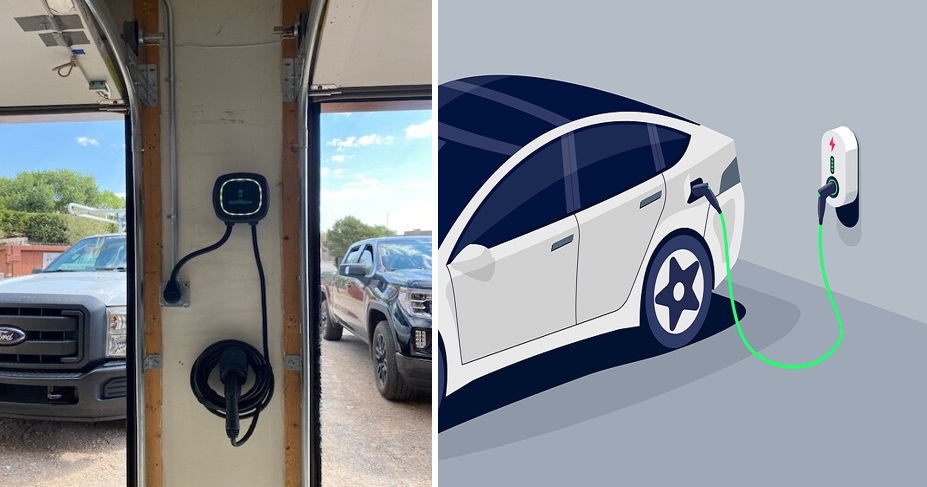Home EV Charging vs. Public EV Charging Cost Comparison

One might use a few typical approaches while charging an electric car. The first option is to use a regular plug to connect to an electrical outlet. The second option is to connect to one via a public network. The final suggestion is to put money into a charging station for your house.
Which option-charging an electric car at home or a public charging station-results in a lower overall cost?
Using a standard plug is the least expensive choice, but it has several drawbacks in terms of comfort compared to the other two choices, most notably a longer time required for charging. If you travel long distances and need to charge your electric car quickly, we suggest that you either make the investment in a home charger or take advantage of the public infrastructure that is already in place. At this point, it is likely easier and more cost-effective to charge your electric vehicle at a public station or install a charger in your house. It depends on a wide variety of things. Utilize our calculator to determine if it would be your best financial advantage to invest in an electric vehicle home charging station or whether it would be more prudent to rely on the public charging infrastructure.
Should I invest in an electric vehicle (EV) home charging station or use the network available to the public? Which of these options has the lowest price?
Using the tool below, you can calculate your breakeven point and see how long you could save money if you buy a home charger. This will help you decide if investing in a home charger is worth it for you, given your circumstances or if you should stick to using the public infrastructure.
The breakeven point for the cost of purchasing the charging station
It is anticipated that it will take one year and 32 days to break even. Suppose you are considering the purchase of a home charging station for your electric vehicle. In that case, you may wonder at what point you will begin to save money instead of charging your vehicle at a public charging station. As you can see from the last section, there is no simple solution to this issue. It depends on several factors, including the cost of electricity, the cost of using public charging stations, and the energy consumption of the particular driver and his electric car. To proceed and acquire a better understanding of the subject, we will walk you through the computation of the breakeven point using two different instances. The first illustration will focus on a motorist who logs an average daily distance of 60 miles or 100 kilometers.
Comparing the cost of charging an electric car at home for 60 miles or kilometers against the cost of charging in a public
The chart compares the prices of charging an electric vehicle at home and in public locations. It has been estimated that a charging station will require an expenditure of $500. We can see that after just under four years, the consumer realizes a financial benefit from charging their device at home. The second illustration is for a motorist who travels an average of 100 miles or kilometers daily. He compared the cost of charging an electric car at home for 100 miles or km versus a public charging station. After over two and a half years of ownership, the electric vehicle (EV) owner, who puts in many miles daily, has recouped his initial investment.
In general, the investment for a home charging station is more quickly reasonable. The lower the energy price for charging at home, the greater your daily consumption. This is because the lower the energy price is, the sooner the investment is fair.
Infrastructure for taxing the public
Your first order of business should be to investigate the current state of the infrastructure for publicly accessible charging in the region where you now reside. Although there has been a noticeable increase in the number of charging outlets, there is still room for improvement in the accessibility of the underlying infrastructure for the public. Some companies that run public charging stations provide customers with the ability to locate charging stations in various locations. If you want to rely on public charging stations, check to see whether the existing infrastructure provides various charging alternatives that you may choose from.
The pricing structures
Charging one’s device at a public charging station is a useful alternative while traveling. If you consider depending only on public charging throughout the day, you must know that certain moments take a lot of work to plan. It cannot be easy to stick to your charging plan if a public station is not functioning properly or if other people who own electric vehicles are using it. You can verify that no other vehicles obstruct your charging station when you have a home charging station since you can charge at any time, regardless of when you had originally planned to do so. However, there is a cost associated with charging at home.
In conclusion, recent instances show that a cautious approach is the best way to identify when a business is profitable again. The breakeven point is determined by factors such as your typical driving distance and the current state of the energy market. Determining whether a home charging station is practical for your circumstances involves several steps, one of which is calculating the costs of charging. Comparing the convenience of charging at home with the cost of purchasing a home charging station is challenging. Suppose you are considering purchasing a home charging station for your electric vehicle. In that case, we recommend you read our guide on purchasing the appropriate home charging station for your electric vehicle.
